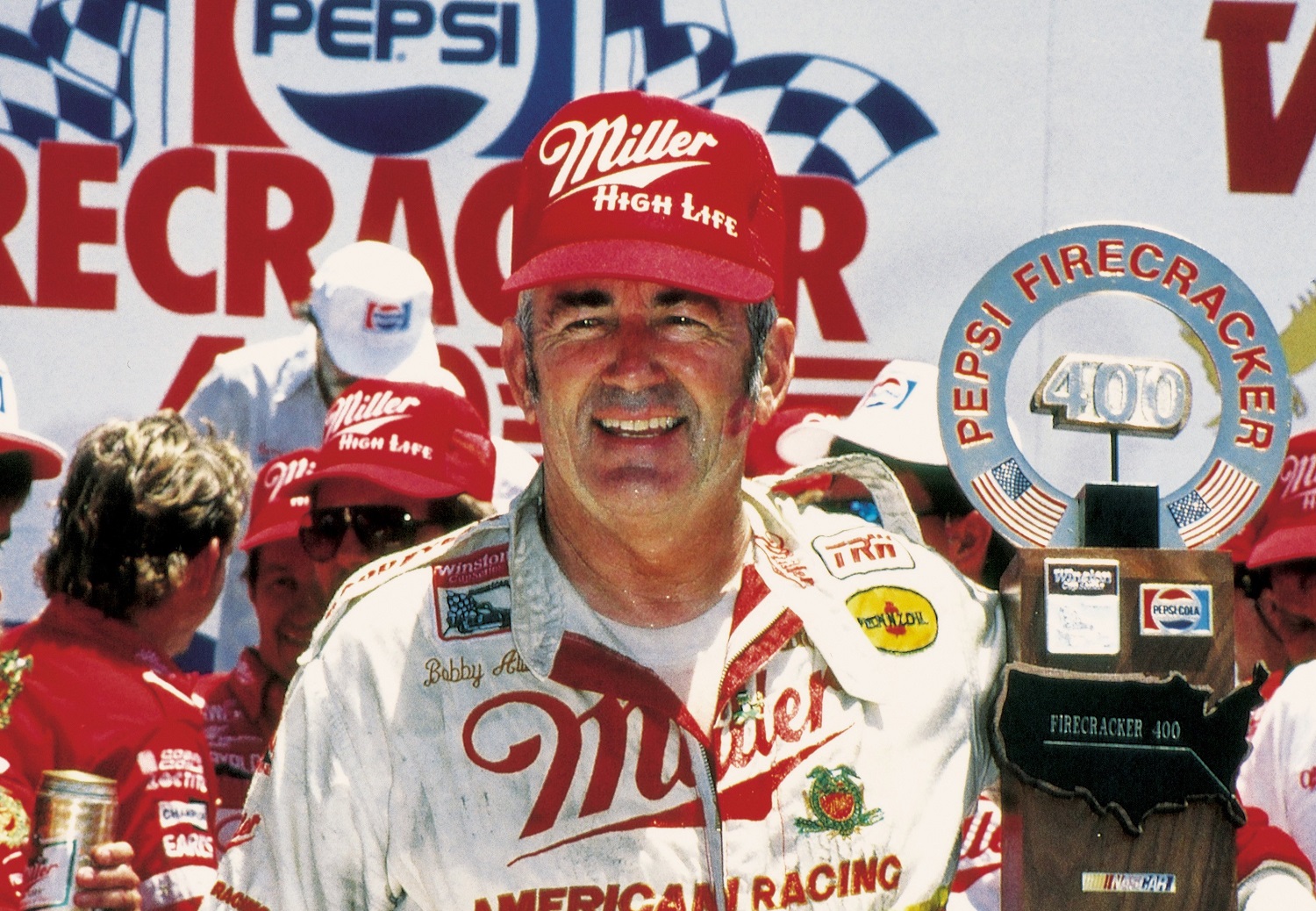NASCAR
Bobby Allison Quit His Team in Midseason After a No-Name Driver Won at Daytona

Whoever said winning cures everything should have consulted with Bobby Allison and DiGard Motorsports. A year and a half after their greatest accomplishment, someone else’s NASCAR Cup Series victory for the team tore the relationship apart.
It was truly one of the oddest stories of demise in the history of the sport.
Bobby Allison was one of the great drivers in NASCAR history

Yeah, everybody associates Bobby Allison with the legendary fight with Cale Yarborough at the 1979 Daytona 500, an incident widely credited with bringing NASCAR into the American sports mainstream. But Allison did so much more in the sport, before and after, as one of its greatest champions.
Allison won the World 600 twice, the Daytona 500 three times, and the Southern 500 four times in a 25-year Cup Series career. Along the way, he bagged the 1983 season championship and was recognized as the sport’s most popular driver seven times between 1971 and ’83.
It added up to enshrinement in the NASCAR Hall of Fame and the International Motorsports Hall of Fame.
DiGard’s effort to boost its star backfired in 1985 because of Greg Sacks
DiGard Motorsports entered the NASCAR Cup Series in 1973 and rode 26 Darrell Waltrip victories from 1975-80 to prominence. The one-car team reached new heights with the arrival of Bobby Allison in the No. 88 car. Allison won eight races in 1982 and then did something bigger by delivering the team’s first series championship the following season.
Two seasons later, the Firecracker 400 turned into the stick of dynamite that blew the team apart, and it all started with an attempt to do right for Allison. After winning the 1983 championship, Allison slipped to sixth in points the following season, and he came to the Daytona summer race, a July 4 weekend tradition, with nothing better than three third-place finishes in 1985.
That inspired DiGard to bring a second car to the Firecracker 400. The goal was to have relatively obscure driver Greg Sacks, 32, test a variety of set-ups during practice and qualifying to hopefully find something that would translate to better results for Allison in subsequent superspeedway races.
For whatever reason, Sacks’ No. 10 Chevy performed like a rocket, and the team entered the unsponsored car in the race. Sacks showed speed throughout, twice took the lead from Bill Elliott over the final quarter of the race to post what would be his only victory in 263 Cup Series starts.
The racing community was shocked, and Allison was incensed.
Bobby Allison quit days later, starting the team’s death spiral
RELATED: Bobby Allison’s Funny Business in the Daytona 500 Didn’t Leave His NASCAR Rivals Laughing
Greg Sacks’ lightning-in-a-bottle day at Daytona understandably put the wheels in motion the next day for DiGard Motorsports to figure out how it could support a second car for the remainder of the Cup Series season. Bobby Allison’s answer was simple: You can’t.
Infuriated by the presumed drain of resources from his car, Allison abruptly quit the team and began racing under his own banner. While it wasn’t the wisest of moves – Allison was never better than fourth and posted six DNFs over the final 13 races – it was devastating for the team because Allison took his Miller Brewing sponsorship with him.
Allison affiliated with Stavola Brothers Racing the following season and won at Talladega. But he faded over the second half of the year and finished seventh in points. He raced parts of two more seasons before serious injuries from multiple wrecks led Allison to retire with 84 wins.
DiGard’s demise was even more pronounced. With its star driver quitting and the Miller money gone, too, the team never posted another victory and ceased operations after just three starts in the 1987 season due to financial difficulties.
Got a question or observation about racing? Sports7’s John Moriello does a mailbag column each Friday. Write to him at [email protected].











